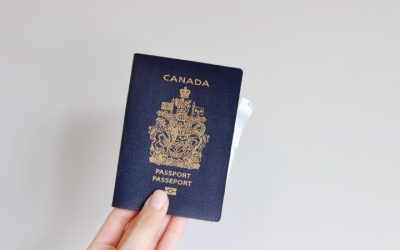NOC CODE
How to find your NOC Code
How to Find your NOC code
The National Occupational Classification (NOC) is a nationally standardized system that is formed of a four-digit code and job description for every occupation in the Canadian labor market.
How To Understand NOC Codes
The NOC assigns a NOC code to every single occupation found in the Canadian labor market using the NOC matrix. NOC codes are used by Immigration, Refugees, and Citizenship Canada (IRCC) and its function are mainly to evaluate every immigration applicant’s work experience.
Immigration applicants are asked to indicate the NOC code that best fits their work experience. Some economic immigration streams are even limited to applicants with experience in occupations identified by specific NOC codes. That’s why you have to understand how NOC code works.
Understanding NOC Codes
I’s very important to be smart enough to know how to choose your right NOC code that matches your work experience, otherwise, your application may be refused or invalid. Every NOC code has an associated job title, lead statement, and list of major duties and responsibilities.
One point is that your actual job title is not necessary in determining your NOC code and this is for Canadian immigration reasons. Your work experience must match the lead statement with the required duties and responsibilities. So your official job title might be associated with a NOC code that doesn’t actually match your experience.
Jobs are categorized by the NOC as a Skill Type and a Skill Level. Usually, the Skill Type is identified by the first digit of the NOC code and the Skill Level is identified by the second digit. Canadian immigration programs usually refer to occupations as being high-skilled or low-skilled, and this is related to the Skill Level of the NOC code assigned to the occupation.
NOC Skill Types
The NOC Skill Type identifies the industry of the occupation. There are ten Skill Types in the NOC matrix:
0 – Management occupations
1 – Business, finance, and administration occupations
2 – Natural and applied sciences and related occupations
3 – Health occupations
4 – Occupations in education, law and social, community, and government services
5 – Occupations in art, culture, recreation, and sport
6 – Sales and service occupations
7 – Trades, transport, and equipment operators and related occupations
8 – Natural resources, agriculture, and related production occupations
9 – Occupations in manufacturing and utilities The first digit of most NOC codes identifies the Skill Type of the occupation.
NOC Skill Levels
The NOC Skill Level identifies occupations by the amount and type of education and training that is generally required to perform the duties of an occupation. The complexity and responsibilities typical of occupation are also considered in assigning a Skill Level. There are four Skill Levels in the NOC matrix:
A: Occupations that usually require a university education
B: Occupations that usually require college education or apprenticeship training
C: Occupations that usually require secondary school and/or occupation-specific training
D: Occupations that usually require on-the-job training
Each of these Skill Levels is usually represented by the second digit in NOC codes:
A – 0 or 1 B – 2 or 3 C – 4 or 5 D – 6 or 7
High-skilled and low-skilled work
For immigration purposes, any occupation classified as Skill Level A or B, or in Skill Type 0 (management occupations) is considered high-skilled work. Any occupation classified as Skill Level C or D is considered low-skilled work. Some immigration programs may also refer to semi-skilled work, which includes all occupations classified as NOC Skill Level A, B, or C, or in Skill Type 0.
Major and Minor Groups
Sometimes, immigration program guides might refer to NOC Major or Minor Groups.
Major Groups refer to the first two digits of a NOC code together. For example, Major Group 31 refers to most occupations in the health industry (Skill Type 3) that generally require university education (Skill Level A). All of these occupations will be assigned a NOC code that begins with the number 31. This includes dentists (3113), pharmacists (3131), and nutritionists (3132), among others.
Minor Groups refer to the first three digits or a NOC code. They group together similar occupations within each major group. For example, judges (4111) and lawyers (4112) are both in Minor Group 411. Social workers (4152) and family counselors (4153) are both in Minor Group 415. Notice that the first two digits of each minor group refer to the major group it belongs to. In this example, Major Group 41.
Finding Your NOC Code
NOC matrix can help you find the NOC code either by your industry or by keywords such as your job title. Always make sure that the lead statement matches your job description, and that you perform the majority of the duties and responsibilities listed under the NOC code.
Pay close attention to the NOC exclusions also. If your occupation seems to match a certain NOC code but also matches one of the NOC codes listed as an exclusion, you may not claim that occupation. You will need to prove that the NOC code is accurate by providing reference letters from your past job. In case your occupation seems to match multiple NOC codes, you must determine which one best fits your experience. You can rely on the visa officer reviewing your application who will a deep knowledge of the NOC matrix. If they find out that your occupation best fits a different NOC code, your application might be refused.
Latest News
IRCC implements temporary initiatives to assist Palestinian families in Gaza
Immigration Refugees and Citizenship Canada (IRCC) has unveiled new, temporary immigration...
Canadian Visa Regulations for Individuals with Criminal Histories
The Canadian federal court clarified that in the visa application process, officers don't have to...
Canada to Join the Apostille Convention
On 16 May, Global Affairs Canada made an announcement stating that Canada has officially become a party to the Convention on the Abolition of the Requirement of Legalization of Foreign Public Documents, also known as the Apostille Convention.
Unveiling Advanced Canadian Passport Technology
Unveiling Advanced Canadian Passport Technology
Canada welcomes historic number of newcomers in 2022
Government reaches target of 431,645 new permanent residents January 3, 2023—Ottawa—Canada has...
IRCC approves Pearson Test of English for Canadian immigration applications
By the end of 2023, the Pearson Test of English (PTE) will be one of the acceptance tests for...







